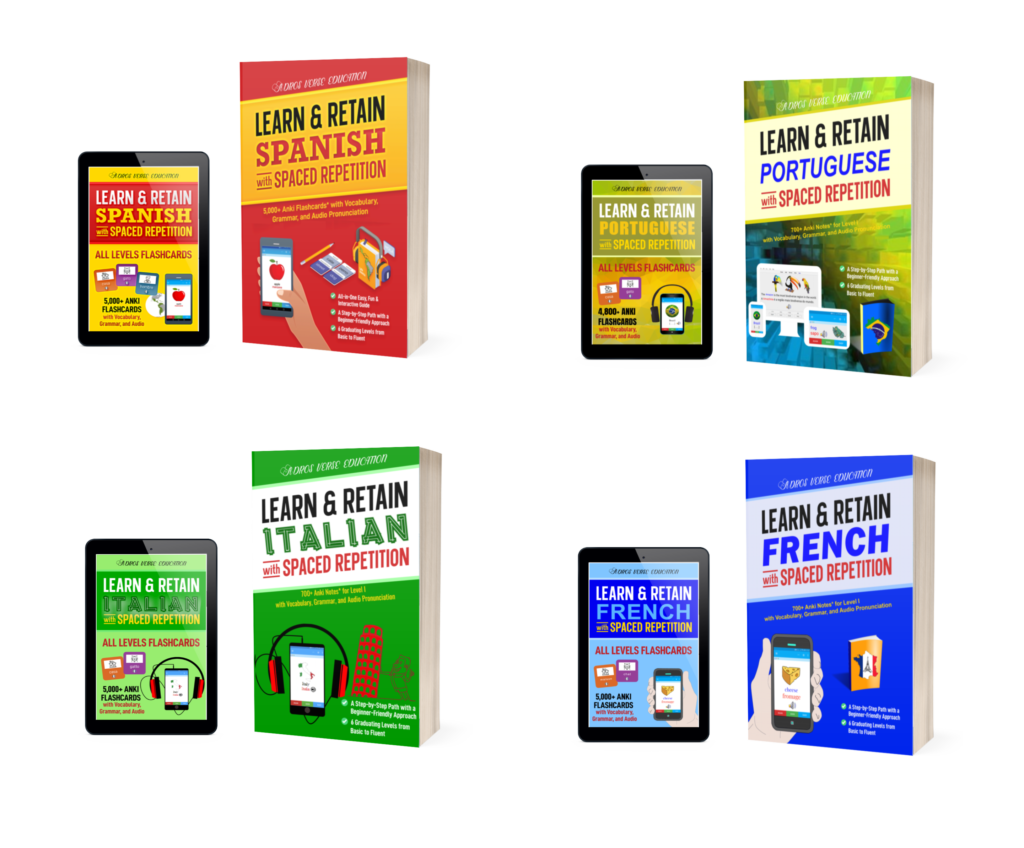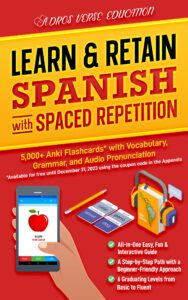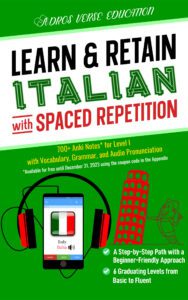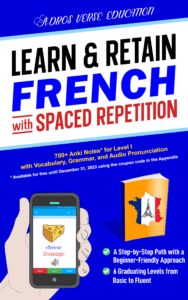In Arabic, الـزَّمَـن المُـضـارِع (az-zaman al-muḍāri‘) ‘the present tense’ primarily refers to actions in the present. Nevertheless, it may also indicate future actions and, in some cases, past actions.
The present tense is expressed in Arabic in three moods: مَـرْفـوع (marfū‘) ‘indicative,’ مَـنْـصـوب (manṣūb) ‘subjunctive,’ and مَـجْـزوم (majzūm) ‘jussive.’ We will focus here on the indicative mood.
Table of Contents
- Basic Triliteral Abstract Present Verbs
- Conjugation of Present Tense Verbs in Arabic
- Plural Verb Conjugation with Non-human Beings
- Plural Verb Conjugation with Human Beings
- Derived Triliteral Present Verb Forms
- Quadri-literal Present Verbs
- Use of قَــدْ (qad) before Present Verbs
- Future Tense Using Present Verbs
- Use of إِنْ شـاءَ الـلّـه (’in-shā’a-llah) ‘God willing’ in the Future Tense
- Level IV – Intermediate II (B2)
Basic Triliteral Abstract Present Verbs
The basic triliteral present tense verb forms in Arabic are derived from their corresponding past tense forms as follows:
| (1) | (2) | (3) |
| يَـفْـعَـلُ (yaf‘alu) | يَـفْـعِــلُ (yaf‘ilu) | يَـفْـعُـلُ (yaf‘ulu) |
| Examples | ||
| يَـشْـرَبُ (yash rabu) he drinks شَـرِبَ (shariba) he drank | يَـكْـسِـرُ (yaksiru) he breaks كَـسَـرَ (kasara) he broke | يَـأْكُــلُ (ya’kulu) he eats أَكَــلَ (’akala) he ate |
| يَـذْهَــبُ (yadh habu) he goes ذَهَــبَ (dhahaba) he went | يَـهْــدِمُ (yahdimu) he demolishes هَــدَمَ (hadama) he demolished | يَـكْـبُــرُ (yakburu) he grows bigger كَــبُــرَ (kabura) he grew bigger |
The primary difference between the three basic verb forms above is the short vowel that marks the middle radical. In general, basic present verb forms do not always correspond to their past verb forms. For example, the present verb يَـشْـرَبُ (yashrabu) ‘he drinks’ follows Form (1), whereas the past verb شَـرِبَ (shariba) ‘he drank’ follows Form (2).
Conjugation of Present Tense Verbs in Arabic
Present-tense verb conjugation varies by gender and number. In the following examples, “x” denotes one of the three possible vowels that mark the middle radical in the basic forms. To conjugate a verb in the present tense in Arabic, the appropriate prefix and suffix are added to the stem ــفْـعـلـ (-f‘xl-).
| Singular | Dual | Plural | |
| 1st person (m/f) | أَنـا أَفْـعـلُ ’anā ’af‘xlu I do | نَـحْـنُ نَــفْـعـلُ naḥnu naf‘xlu We do | |
| 2nd person masculine | أَنْـتَ تَــفْـعـلُ ’anta taf‘xlu You do | أَنْـتُمـا تَــفْـعــلانِ ’antumā taf‘xlāni You (both) do | أَنْـتُـمْ تَــفْـعـلــونَ ’antum taf‘xlūna You (all) do |
| 2nd person feminine | أَنْـتِ تَــفْـعـلــيـنَ ’anti taf‘xlīna You do | أَنْـتُـنَّ تَــفْـعـلْــنَ ’antunna taf‘xlna You (all) do | |
| 3rd person masculine | هُــوَ يَــفْـعـلُ huwa yaf‘xlu He does | هُــمـا يَـــفْـعــلانِ humā yaf‘xlāni They (both) do | هُــمْ يَــفْـعـلـــونَ hum yaf‘xlūna They do |
| 3rd person feminine | هِــيَ تَــفْـعـلُ hiya taf‘xlu She does | هُــمـا تَــفْـعــلانِ humā taf‘xlāni They (both) do | هُــنَّ يَــفْـعـلْـــنَ hunna yaf‘xlna They do |
The verb conjugation in the table above is in the indicative mood. Unlike past verbs, present verbs in Arabic are always مُـعْـرَب (mu‘rab) ‘grammatically declinable.’ This means that present verbs change their last vowel depending on the mood of the sentence. In the upcoming lessons, we will discuss the subjunctive and jussive moods.
Here are some examples of the present verb in context:
| نَـحْـنُ نَـشْـرَبُ الْـعَـصـيـر٠ naḥnu nashrabu -l-‘aṣīr. We drink the juice. | أَكْـتُـبُ رِسـالَـةً لِـصَـديـقـي٠ ’aktubu risālatan li-ṣadīqī. I write a letter to my friend. |
| تَـكْـثُـرُ الْـمَـشـاكِـلُ٠ takthuru -l-mashākil. The problems increase. | يَـذْهَـبـانِ إِلـى الـمَـدْرَسَـةِ بـاكِـرًا٠ yadh habāni ’ilā -l-madrasati bākiran. They (both) go to school. |
| الْأَوْلادُ يَـكْـبُـرونَ بِـسُـرْعَـةٍ٠ al-’awlādu yakburūn bi-sur‘ah. The boys grow up quickly. | أَحْـمَـدُ يَـسْـمَـعُ صَـوْتًـا٠ ’aḥmadu yasma‘u ṣawtan. Ahmad hears a voice. |
The detached personal pronoun can be omitted, as the verb conjugation ending is sufficient to indicate the subject.
Plural Verb Conjugation with Non-human Beings
When describing non-human beings—such as animals, plants, objects, or concepts—in the plural, the feminine singular form تَــفْـعـلُ (taf‘xlu) is used. For example:
| تَـكْـثُـرُ الْـمَـشـاكِـلُ٠ takthuru -l-mashākil. The problems increase. | تَـشْـرَبُ الْـقِـطَـطُ الْـمـاءَ٠ tashrabu -l-qiṭaṭu -l-mā’. The cats drink the water. |
Plural Verb Conjugation with Human Beings
When describing human beings, the verb agrees in both gender and number if the noun precedes the verb; otherwise, the verb remains singular but retains gender agreement.
Here are some examples:
| الْأَوْلادُ يَـكْـبُـرونَ بِـسُـرْعَـةٍ٠ al-’awlādu yakburūna bi-sur‘ah. The boys grow up quickly. | يَـكْـبُـرُ الْأَوْلادُ بِـسُـرْعَـةٍ٠ yakburu -l-’awlādu bi-sur‘ah. The boys grow up quickly. |
| الـبَـنـاتُ يَـذْهَـبْـنَ إِلـى الـمَـدْرَسَـة٠ al-banātu yadh habna ’ilā -l-madrasah. The girls go to school. | تَـذْهَـبُ الـبَـنـاتُ إِلـى الـمَـدْرَسَـة٠ tadh habu –l-banātu ’ilā -l-madrasah. The girls go to school. |
Derived Triliteral Present Verb Forms
In addition to the three basic verb forms, there are derived patterns that build on these forms and add prefixes, suffixes, infixes, or other modifications. The ten most common present verb patterns in Arabic are:

Each present verb pattern is derived from the corresponding past verb pattern, e.g., the present verb form of the past verb فـاعَـلَ (fā‘ala) is يُـفـاعِـلُ (yufā‘ilu), both following Pattern (3).
All these derived patterns adhere to the same verb conjugation rules discussed earlier.
Let us consider some examples:
- Verb patterns derived from the triliteral root ك – ت – ب (k – t – b).

- Verb patterns derived from the triliteral root س – ل – م (s – l – m).

- Verb patterns derived from the triliteral root ع – ل – م (‘ – l – m).

Quadri-literal Present Verbs
Most verbs in Arabic have tri-consonantal roots, while only a few verbs have quadri-consonantal roots. Let us now examine the shortest present verb pattern of quadri-consonantal root verbs.
There is only one basic form, that is, يُـفَـعْـلِـلُ (yufa‘lilu) (yu◌a◌◌i◌u), which is the present form of the past verb فَـعْـلَـلَ (fa‘lala) (◌a◌◌a◌a). This basic verb form is called المُجرد الـرُّبـاعـي (al-mujarrad ar-rubā‘ī) ‘the quadri-literal abstract.’
Examples of basic quadri-consonantal root verbs include:
| يُـفَـعْـلِـلُ (yufa‘lilu) | ||
| Examples | ||
| يُـتَـرْجِــمُ (yutarjimu) he translates | يُدَبْـلِـجُ (yudabliju) he dubs (e.g., a film) | يُـهَـنْـدِسُ (yuhandisu) he engineers |
| يُـفَـهْـرِسُ (yufahrisu) he compiles an index | يُـزَلْــزِلُ (yuzalzilu) he shakes violently | يُـسَــلْـسِـلُ (yusalsilu) he links together |
In addition to the basic مُجرد ربـاعـي (mujarrad rubā‘ī) ‘quadri-literal abstract’ verb form, the two most common derived quadri-literal root present verb patterns in Arabic are:
| (1) | (2) |
| يَـتَـفَـعْـلَـلُ (yatafa‘lalu) | يَـفْـعَـلِـلُّ (yaf‘alillu) |
| يَـتَـسَــلْـسَــلُ (yatasalsalu) it flows or follows in succession | يَـطْـمَـئِـنُّ (yaṭma’innu) he feels safe or secure |
| يَـتَـدَحْـرَجُ (yatadaḥraju) it rolls | يَـشْـمَـئِـزُّ (yash ma’izzu) he feels disgust at |
All these quadri-literal root verbs and their derived patterns follow the same verb conjugation rules discussed earlier.
Here are some examples:
| تَـطْـمَـئِـنُّ الْاُمُّ على أَبْـنـائـهـا٠ taṭma’innu -l-’ummu ‘alā ’abnā’ihā. The mother feels reassured about her children. |
| تَـتَـسَــلْـسَــلُ الْأَحْـداثُ بِـسُـرْعَـةٍ٠ tatasalsalu -l-’aḥdāthu bi-sur‘ah. The events follow in succession rapidly. |
Use of قَــدْ (qad) before Present Verbs
In Classical Quranic Arabic, the particle قَــدْ (qad) before a present verb implies emphasis, similar to its usage before a past verb.
However, in Modern Standard Arabic, قَــدْ (qad) before a present verb implies doubt and is often translated as “may” or “perhaps.”
Here are some examples in Modern Standard Arabic:
| قَــدْ تَـكْـثُـرُالْـمَـشـاكِـلُ٠ qad takthuru -l-mashākil. The problems may increase. | قَــدْ أَكْـتُـبُرِسـالَـةً لِـصَـديـقـي٠ qad ’aktubu risālatan li-ṣadīqī. I may write a letter to my friend. |
Future Tense Using Present Verbs
The future tense in Arabic is easily expressed by placing سَـ٠٠٠ (sa…) or سَـوْفَ (sawfa) before the present verb. For example:
| نَـحْـنُ سَـنَـشْـرَبُ الـعَـصـيـر٠ naḥnu sa–nashrabu -l-‘aṣīr. (or) نَـحْـنُ سَـوْفَ نَـشْـرَبُ الـعَـصـيـر٠ naḥnu sawfa nashrabu -l-‘aṣīr. We will drink the juice. | سَـأَكْـتُـبُ رِسـالَـةً لِـصَـديـقـي٠ sa–’aktubu risālatan li-ṣadīqī. (or) سَـوْفَ أَكْـتُـبُ رِسـالَـةً لِـصَـديـقـي٠ sawfa ’aktubu risālatan li-ṣadīqī. I will write a letter to my friend. |
| سَـتَـكْـثُـرُ الـمَـشـاكِـلُ٠ sa–takthuru -l-mashākil. (or) سَـوْفَ تَـكْـثُـرُ الـمَـشـاكِـلُ٠ sawfa takthuru -l-mashākil. The problems will increase. | سَـيَـذْهَـبـانِ إِلـى الـمَـدْرَسَـةِ٠ sa–yadhhabāni ’ilā -l-madrasah. (or) سَـوْفَ يَـذْهَـبـانِ إِلـى الـمَـدْرَسَـةِ٠ sawfa yadhhabāni ’ilā -l-madrasah. They (both) will go to school. |
| الْأَوْلادُ سَـيَـكْـبُـرونَ٠ al-’awlādu sa–yakburūn. (or) الْأَوْلادُ سَـوْفَ يَـكْـبُـرونَ٠ al-’awlādu sawfa yakburūn. The boys will grow up. | أَحْـمَـدُ سَـيَـسْـمَـعُ صَـوْتًـا٠ ’aḥmadu sa–yasma‘u ṣawtan. (or) أَحْـمَـدُ سَـوْفَ يَـسْـمَـعُ صَـوْتًـا٠ ’aḥmadu sawfa yasma‘u ṣawtan. Ahmad will hear a voice. |
Use of إِنْ شـاءَ الـلّـه (’in-shā’a-llah) ‘God willing’ in the Future Tense
The use of the expression إِنْ شـاءَ الـلّـه (’in-shā’a-llah) ‘God willing’ often accompanies talking about the future tense in Arabic discourse and culture. It is deeply rooted in the cultural, religious, and linguistic practices of Arabic-speaking communities.
Here are some examples:
| سَـأَكْـتُـبُ رِسـالَـةً لِـصَـديـقـي إِنْ شـاءَ الـلّـه٠ sa–’aktubu risālatan li-ṣadīqī ’in-shā’a-llah. I will write a letter to my friend, God willing. |
| الْأَوْلادُ سَـوْفَ يَـكْـبُـرونَ إِنْ شـاءَ الـلّـه٠ al-’awlādu sawfa yakburūna ’in-shā’a-llah. The boys will grow up, God willing. |
The expression conveys intentions, plans, or expectations while emphasizing uncertainty or dependency on external factors. It reflects the belief that, while the speaker may plan an action or anticipate an outcome, its realization ultimately depends on God’s will.
Other lessons in Level IV:









